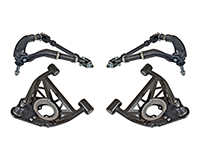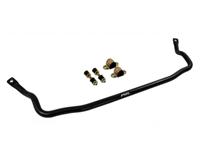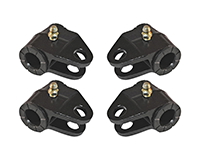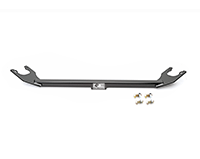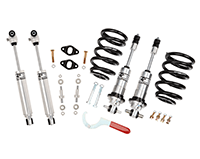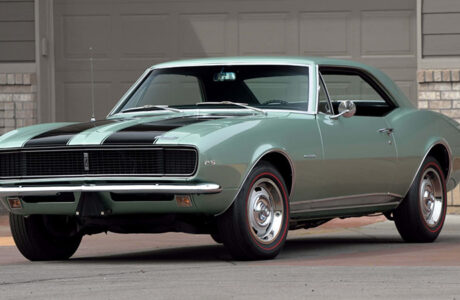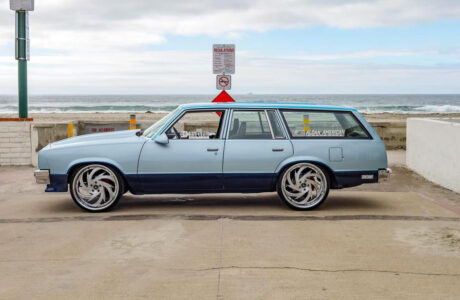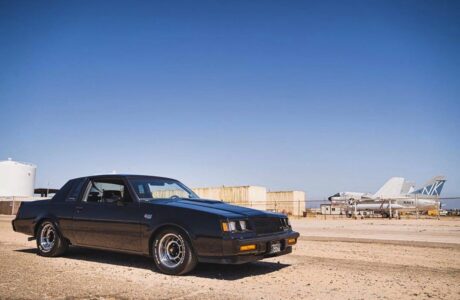Reviving a Classic: Unpacking the Fourth-Generation Malibu’s Legacy

The fourth-generation Chevrolet Malibu, produced from 1978 to 1983, underwent a transformative redesign that reflected the automotive industry’s shift towards efficiency and aerodynamics.
This article explores Malibu’s enduring appeal, which continues to captivate fans of classic American muscle cars. We’ll examine Malibu’s design, structure, suspension, and engine options and how to upgrade ride and handling with bolt-on suspension solutions.
Chassis and Suspension
The fourth-generation Chevrolet Malibu’s chassis and suspension were pivotal in its evolution into a more efficient and driver-focused vehicle. The new chassis, developed to reduce weight without sacrificing strength, utilized lighter materials and innovative engineering techniques. This allowed the Malibu to shed unnecessary pounds, contributing to better fuel economy and improved handling.
The fourth-generation Chevrolet Malibu featured a front suspension system comprised of unequal-length control arms, coil springs, and telescopic shock absorbers. This setup provided better wheel alignment and suspension geometry throughout the range of motion. The unequal-length control arms helped maintain tire contact with the road for better traction and stability, especially during cornering and over bumps.
At the rear, the Malibu employed a four-link suspension system with coil springs and telescopic shocks. This configuration provided better wheel control and ride stability than leaf spring systems. The four-link design reduces body roll and enhances traction during cornering and uneven road conditions.
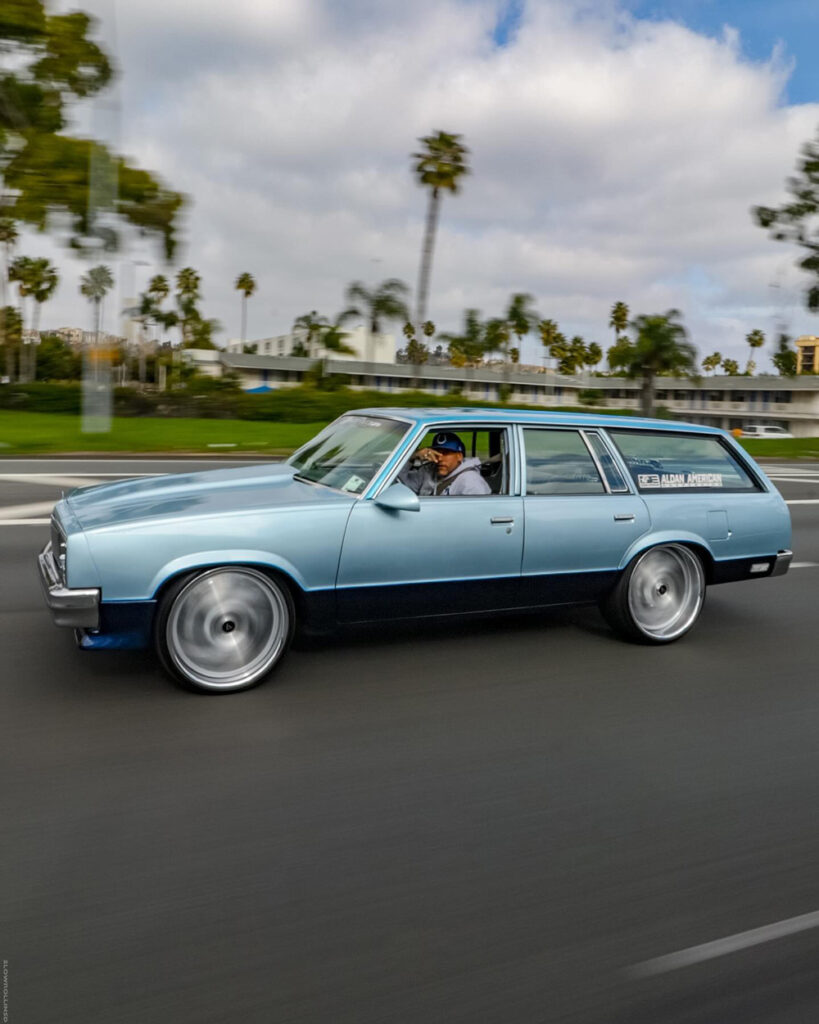
F41 Suspension Option
Starting with the 1980 model year, the F41 suspension performance-oriented upgrade option was available to enhance the car’s handling and stability. The F41 suspension package included stiffer springs, heavier-duty shock absorbers, a larger-diameter front stabilizer bar, and a rear stabilizer bar not otherwise included in the standard suspension setup. These modifications provided a firmer ride and reduced body roll during cornering, resulting in a more precise steering response and improved overall vehicle dynamics.
Engine Availability
The fourth-generation Chevrolet Malibu offered a variety of gasoline engines to cater to different preferences and requirements, ranging from fuel-efficient inline-six engines to more powerful V8 options.
3.3-liter Inline-Six (1978 onwards): A fuel-efficient base engine.
3.8-liter V6: Offered as a mid-range option for better performance and efficiency.
4.4-liter V8 (from 1979): A small V8 providing more power.
5.0-liter V8: Popular for its balance of performance and fuel economy.
5.7-liter V8: The most powerful option available in select models.
These engines ranged from economical to performance-focused, catering to various drivers’ needs and preferences. Regardless of which engine was fitted initially in your Malibu, a conversion to virtually any small-block Chevy is an easy swap.
Excellent candidates for an engine swap were 1982-1983 models equipped with either the V6 or V8 diesel engines.
Transmission and Rear Axle Choices
The 1978 to 1983 Chevrolet Malibu was available with a range of transmission options to complement its variety of engines:
Three-speed manual: This was the standard transmission offered on base models, especially in the early years of production.
Four-speed manual: The Muncie M20 was an option for those who preferred a more engaged driving experience. This transmission was paired with larger displacement engine options.
Three-speed automatic: The most common transmission in most Malibu models, this transmission was favored for its ease of use and smooth shifting, making it suitable for everyday driving.
Four-speed automatic: Available later in the production run, the Turbo 350 transmission offered improved fuel efficiency and performance due to the extra gear, providing a better driving experience and highway cruising capabilities.
These transmission choices allowed buyers to tailor the Malibu to their driving preferences, whether they prioritized fuel economy, ease of driving, or performance.
Available rear axle ratios included 2.14, 2.29, 2.41, 2.56, 2.73, 2.93, 3.08, 3.23 and 3.42 to 1. Selecting the G80 option installed a Positraction limited slip differential in the 7.5″ 10-bolt rear axle.
Suspension Upgrades
As much as the F41 suspension package improved the handling of the fourth-gen Malibu, it’s nowhere near as capable as a modern coilover suspension conversion.
If you’re modifying a 1978-1983 Chevrolet Malibu, Aldan American has a coilover conversion kit for you. The Aldan American Level 2 Coilover Conversion kit represents a significant upgrade for the Malibu’s suspension system, offering a comprehensive solution for enhancing performance and adjustability.
These kits, crafted in the U.S.A., include high-performance, adjustable coilovers and robust tubular control arms, ensuring a seamless, bolt-on installation that maintains an OEM-like fit.
Designed to deliver a superior driving experience, Aldan American coilovers provide extensive adjustment capabilities, allowing for the perfect balance of ride quality, comfort, and handling. Including Spohn Performance RRx tubular control arms in the package underscores a commitment to superior suspension dynamics, aiming to lower the vehicle effectively and elevate its handling, safety, and performance to new heights.
The front suspension upgrade features Aldan Road Comp Single Adjustable or RCX Double Adjustable coilovers, paired with Spohn Performance RRx tubular control arms, offering a wide range of shock adjustments to fine-tune handling and responsiveness. Aldan’s cold-wound linear coil springs complement these dampers, ensuring a ride suited to varying driving conditions and styles.
Spohn Performance’s RRx tubular control arms, featuring high-grade materials, Delrin bushings, and premium ball joints, exemplify durability and improved handling.
For the rear, the kit provides options like Aldan Road Comp Single Adjustable or Track Comp Double Adjustable coilovers, each offering multiple shock adjustment positions for enhanced tuning and performance capabilities.
The Spohn control arms and the comprehensive Aldan American coilover system are engineered for performance and longevity, reflecting a dedication to enhancing the Malibu’s suspension for enthusiasts seeking the ultimate driving dynamics.
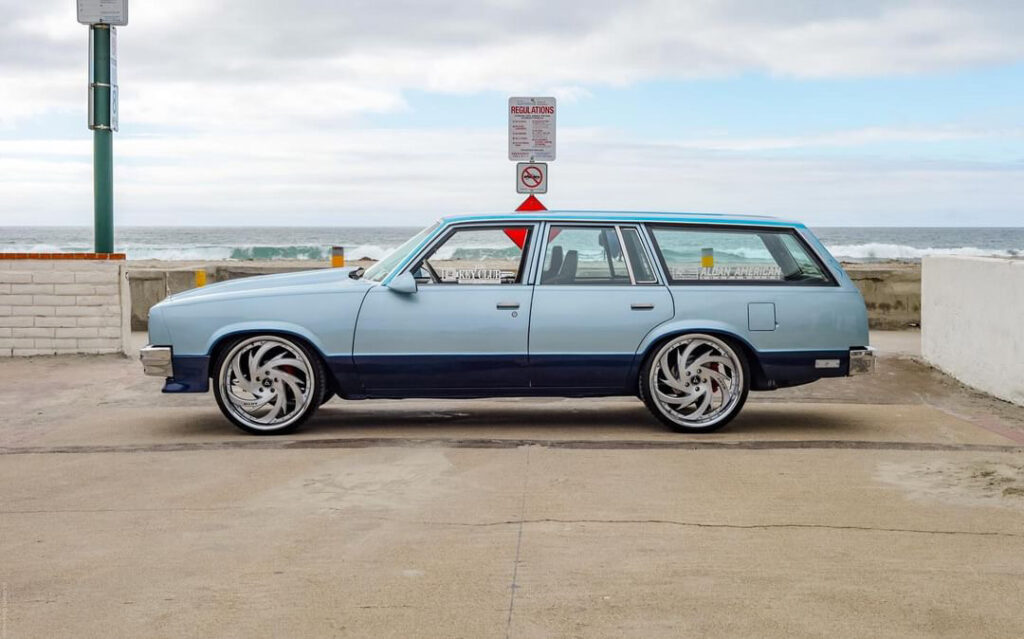
Summary
In conclusion, the fourth-generation Chevrolet Malibu represents a pivotal era in the evolution of American mid-size sedans, blending traditional muscle car elements with the contemporary demands of efficiency and aerodynamics.
Its wide range of body styles and its range of engines and transmissions catered to a broad audience.
The introduction of the F41 suspension and the potential for modern coilover upgrades like those from Aldan American demonstrate the Malibu’s versatility and enduring appeal.
Whether cherished for its nostalgic value or appreciated for its upgrade potential, the fourth-generation Malibu remains a beloved icon in the automotive world, continuing to captivate enthusiasts with its unique blend of style, performance, and adaptability.

